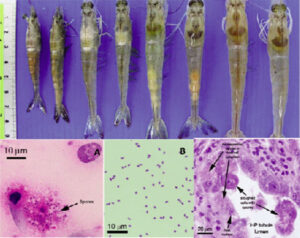11 Types of Shrimp Diseases that Often Occur During Cultivation
Shrimp disease is one of the factors causing failure that must be overcome during cultivation. What’s more, these diseases can also cause mass mortality which can lead to significant economic losses and decreased production.
Various influencing factors cause disease outbreaks, from pathogens, poor environmental conditions, and pond management to shrimp being carriers of shrimp that have previously been infected with the disease.
So, what types of diseases are often encountered during shrimp cultivation? Check out the following explanation.
Also Read: The Threats of Nitrite in Shrimp Ponds and How to Overcome It
Factors Causing Vannamei Shrimp Disease
1. Pathogen
The most common causes of vannamei shrimp disease are viruses, bacteria, fungi, and parasites. Some examples of conditions in shrimp caused by pathogens include White Spot Syndrome Virus (WSSV), Early Mortality Syndrome (EMS), Infectious Hypodermal and Hematopoietic Necrosis Virus (IHHNV), Taura Syndrome Virus (TSV), and Vibriosis.
The spread of diseases caused by pathogens in shrimp can be transmitted through contaminated water, feed, or equipment and can spread quickly in ponds.
2. Poor Environmental Conditions
Environmental conditions are also directly a factor causing disease outbreaks in shrimp. Poor water quality, high levels of pollutants, and low dissolved oxygen can make shrimp more susceptible to disease.
Not only that, stressful conditions such as drastic and sudden changes in temperature or salinity can also increase the risk of disease in shrimp.
3. Poor Farm Management Practices
Poor pond management is a trigger factor for the emergence of subsequent diseases. This management includes feed, water quality, shrimp health, cultural waste, and biosecurity.
The overall management of this pond management must be synergized and well-practiced. This is because if one is lacking, it will directly impact the shrimp and increase their potential to get sick.
4. Import of Infected Shrimp
Indonesia takes a lot of shrimp fry from other countries, for example, the United States. However, before these imported fries are cultivated, they must first check the quality of the fry to ensure they are not attacked by disease or become carriers.
Imported fry already infected can become carriers for other fries in the same pond. This makes the spread of the disease faster and more massive.
Also Read: Get to Know the Covert Mortality Nodavirus (CMNV) which Can Attack Vannamei Shrimp
Types of Shrimp Diseases That Often Infect
1. White Spot Syndrome Virus (WSS)
White spot disease or white spot disease is a disease in vannamei shrimp that is highly contagious and deadly. A virus causes this disease from the crustacean group. In addition, environmental factors can also trigger white spot disease infection.
The appearance of white spots and redness on the shrimp’s body indicates early symptoms of white spot disease. Over time, shrimp attacked by this disease will die slowly because it causes them to lose their appetite and eventually die.
2. Early Mortality Syndrome (EMS)
Early Mortality Syndrome (EMS), also known as Acute Hepatopancreatic Necrosis Disease (AHPND), is a disease that attacks pond shrimp and is characterized by sudden death, loss of appetite, and abnormal swimming behaviour.
This type of disease is the most frightening for fish farmers. This is because the death rate from EMS disease can reach 100% of the population.
3. Infectious Hypodermal and Hematopoietic Necrosis Virus (IHHNV)
Infectious Hypodermal and Hematopoietic Necrosis Virus is a type of disease caused by a virus that causes shrimp to experience defects in the abdomen and snout.
Shrimp infected with IHHNV will show signs of swimming behaviour to the surface of the water, then remain motionless and eventually sink to the bottom of the pond. This behavior will continue until the shrimp die.
4. Taura Syndrome Virus (TSV)
Taura Syndrome Virus is a disease that first appeared in the Taura River, Ecuador. Meanwhile, transmission can occur through water and direct contact between shrimp or other crustaceans, carriers of the TSV virus.
The Taura Syndrome Virus has spread only in Colombia, Peru, Brazil, Hawaii, Texas, and Florida until now. Meanwhile, in Asia, no shrimp has been infected with this virus.
5. Vibriosis
Vibriosis is a type of shrimp disease caused by the attack of Vibrio sp. When shrimp are infected with vibriosis, symptoms will appear in a thin skin, black sores on the body, and incomplete shrimp limbs.
Vibriosis disease is no less deadly than other illnesses found in shrimp. The death rate caused by this disease can reach 85% of the population.
6. White Feces Disease
White feces disease, also known as white feces disease, was first detected in Indonesia in 2014. This type of disease causes the death of up to 40% of the total name shrimp intensive pond population.
Symptoms caused by shrimp infected with White Feces Disease include decreased appetite, shrimp intestines changing color to white and even looking empty due to lack of food intake, abnormal shrimp growth, and feces floating on the surface of the water.
7. Infectious Myonecrosis Virus (Myo/IMNV)
Infectious Myonecrosis Virus (IMNV) or Myo in vannamei shrimp is a type of disease that can cause mass death. Symptoms of shrimp infected with this disease are reddening of the lower segment of the shrimp’s tail. Then slowly, the shrimp will die and sink to the bottom of the pond.
Myo disease is caused by an RNA (Ribonucleic Acid) virus and is classified as malignant because it causes mass death in a short time when the shrimp are 60-80 days old.
8. Black Gill
Black gill disease in vannamei shrimp is caused by the genus Fusarium or fungus. Besides fungi, ciliates can also cause black gill syndrome.
Black gill causes normally white gills to darken in response to the presence of ciliates, the primary agents causing gill melanization, leading to damage to the respiratory surface.
The normal colour of shrimp gills is dull white. In the early stages of black gill disease, black spots appear on the gills. External signs of severely infected shrimp show black gills compared to normal ones.
All gills turn black, with some turning brown, which is the initial stage of black gill infection. The gill lamellae of shrimp infected with black gill show the presence of fungal spores.
9. Black Spot
Black spots, also known as black spots, can form on the body of shrimp. Shrimp shells are usually brown and may show black spots. These black spots usually appear after harvesting shrimp, indicating a decrease in shrimp quality.
The cause is a bacterium called Vibrio anguillarum, which thrives in saltwater at temperatures between 25 to 32 degrees Celsius. This bacterium is commonly found in pond environments and does not cause disease if its concentration is kept under control.
However, Vibrio bacteria can become dangerous when water quality in the ponds deteriorates, especially due to the accumulation of organic feed residues at the pond bottom. Decreased pond quality can trigger Vibrio bacterial growth. Additionally, direct sunlight on post-harvest shrimp can also accelerate the appearance of black spots on shrimp.
To prevent this, farmers can regularly clean the pond bottom of waste, including leftover feed and moult residues. They should also maintain water quality by monitoring plankton levels, increasing dissolved oxygen, providing sufficient minerals, and managing feeding to avoid overfeeding, which can make the pond bottom dirty.
10. Yellow Head
Yellow head disease increases mortality rates up to 100% within 3 to 5 days after infection. The triggering factors are sudden changes in pH and dissolved oxygen (DO) levels. Clinical symptoms usually appear 2-4 days after infection, with death occurring within 3 to 5 days.
Like WSSV disease, this disease is classified as a category C-1 pathogenic virus. Clinical symptoms of the yellow head disease include increased shrimp appetite followed by a drastic decrease until the late stages of the disease, changes in the colour of the shrimp tail to reddish with a yellowish head, and paleness or brownish colouration in the gills.
These signs may not always be visible in infected shrimp; therefore, accurate diagnosis requires gill staining and hemolymph examination and can be further confirmed through RT-PCR.
11. Enterocytozoon hepatopenaei (EHP)
Enterocytozoon hepatopenasei (EHP), also known as EHP disease in shrimp, is a disease caused by the microsporidian parasite. This parasite leads to slow growth in shrimp.
EHP disease in shrimp was first detected in 2004 in Thailand in cultured giant tiger shrimp. In Indonesia, this disease was first reported in 2015.
Although EHP disease does not directly cause shrimp mortality, its impact is felt through a decrease in shrimp growth rate during cultivation. This can result in significant differences in shrimp size within a single cultivation pond.
Also Read: Get to Know Myo IMNV Disease in Vannamei Shrimp and Its Characteristics
Manage Disease Free Shrimp Farms with DELOS!
Various types of shrimp diseases can cause mass mortality, resulting in production losses that farmers must suffer. Good pond operational management plays a vital role in prevention and mitigation.
However, you don’t need to worry because DELOS is here to help you manage your shrimp pond. DELOS is the best science, technology, and operational management-based aqua-tech company with a team of the top 99 best in Indonesia.
DELOS pond management is also integrated with AquaHero, making it easier for farm owners and farm personnel to monitor the condition of shrimp ponds every day in real-time based on uploaded data.
To connect with the DELOS Team, you only need to send an email via contact@delosaqua.com or submit your questions via our website contact column at www.delosaqua.com. Choose DELOS to accompany your shrimp farming!















